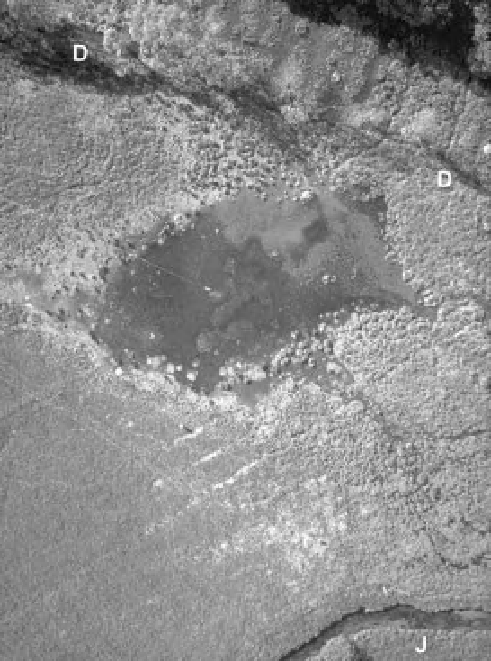Geoscience Reference
In-Depth Information
Figure 7-42.
Panoramic view of a beaver meadow in a glacial kettle hole near Bear Lake in the San Isabel National
Forest, Colorado, United States. Photo by J.S. Aber taken from a tree on the edge of the meadow.
about twice the size of other mink (Maas 2010).
Hunting pressure on wild populations of fur-
bearing aquatic animals has lessened in recent
decades for several reasons:
• Fur farms, in which animals are raised and
bred for enhanced fur production.
• Limitations on quantities and seasons for
harvesting wild fur-bearing animals.
• Synthetic i bers, so-called faux furs, have
replaced natural furs for garments.
• Global demand for natural fur has declined
due to environmental concerns.
• Reintroduction of wild populations into
areas from which they had been extirpated.
As a result, many populations of fur-bearing
wetland animals have stabilized, and some
species are even expanding their ranges. The
American beaver, for example, is now common
across the Great Plains region (Fig. 7-47), where
it once had been eliminated by fur trapping.
Many wetland mammals remain in jeopardy,
nonetheless, primarily because of human
encroachment, hunting, and loss of habitat.
The Florida panther (Fig. 7-48) is a well-known
example. It once ranged across the southern
United States from Texas to South Carolina, but
nowadays is restricted to a few small pockets in
southern Florida. It is listed as an endangered
species and is on the brink of becoming extinct
Figure 7-43.
Flooding caused by a beaver dam in the
Jossa Valley near Mernes (Spessart), Germany. On the
inundated l oodplain between the Jossa River ( J) and
the main irrigation ditch crossing the upper part of the
image (D), a multi-channel drainage network and small
lake have developed. Field of view
∼
150 m across.
Hot-air blimp photograph courtesy of J.B. Ries,
I. Marzolff and A. Fengler.





